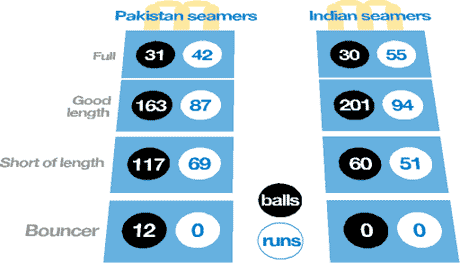Pace makes the difference
While India let Pakistan off the hook in their first innings, the Pakistani bowlers kept up the pressure throughout the Indian innings with incisive bowling


George Binoy is editorial assistant of Cricinfo
While India let Pakistan off the hook in their first innings, the Pakistani bowlers kept up the pressure throughout the Indian innings with incisive bowling


George Binoy is editorial assistant of Cricinfo